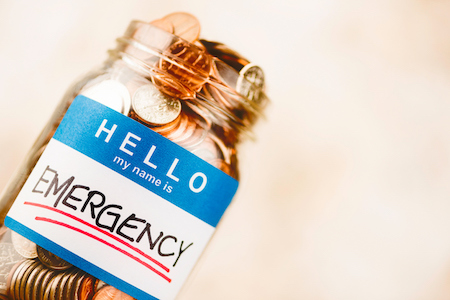
How a No-Spend Month Can Solve Your Cash Flow Problems
Nearly half of Americans are living paycheck-to-paycheck, and 61 percent don’t have enough money to cover six months of expenses, according to a GoBankingRates survey.
This trend of working to cover only day-to-day expenses can lead to the worst financial mistake of your life—not having an emergency fund. Without one, you could be forced to go into debt to pay for emergency medical care, a broken car that you rely on to get to work, a busted water heater, the loss of your job or any other unexpected emergency. Sooner or later, something will pop up.
A no-spend month could help solve that problem so that you’re not part of the 19 percent of Americans who don’t have any money in an emergency fund, or the 31 percent who don’t have at least $500 set aside for emergencies.
The first goal for an emergency fund should be to accumulate enough to cover six months of living expenses. After that, work to increase it to a cushion of 18 to 24 months. To give it a good kick start, eliminate all non-essential spending for a month. Do this by sorting your expenses into wants versus needs.
Wants, for example, can include eating out, going to a movie, vacation, a date night, going out for a drink, shopping and anything that you can live without, such as cable TV.
Needs are pretty obvious. You have to pay your rent or mortgage, buy groceries, get the medical care you need and pay your monthly bills. Don’t live without hot water or electricity just so you can save some cash.
At the end of the month—or the beginning if you’re sure your budgeted numbers are correct—move the unspent money into a savings account or other account where you can get the money relatively quickly, if needed.
Hopefully, it will be enough money to cover your expenses for a month. If possible, continue this for a second month, or at least cut out non-essentials that you’ve found you can live without. Cable TV may not seem so important after a month away.
After that difficult first month, decide how much you can now afford to put aside in an emergency fund each month and have it automatically transferred out. You may not feel you need to put aside all of that first month’s savings each month, and can add some wants back to your monthly expenses. This process should have you sleeping better at night and not having to worry about emergencies that you can’t afford.
